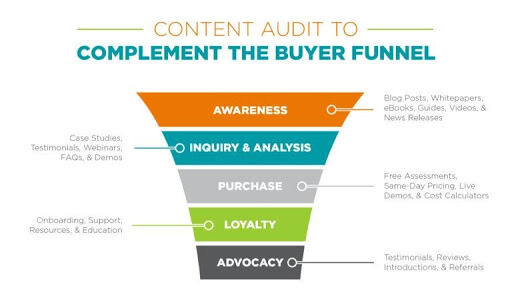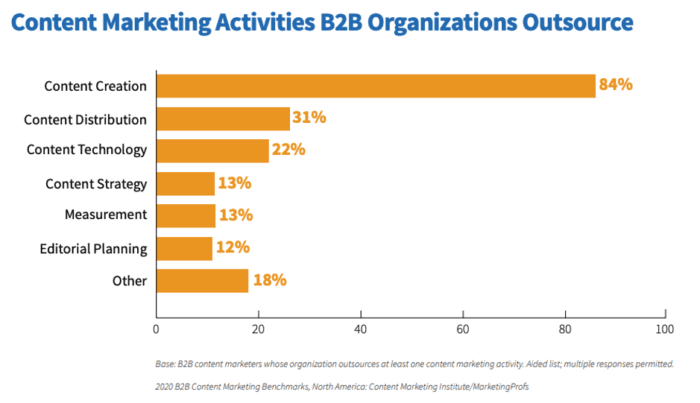Create and effective content strategy that actually convert more customers with the help of this amazing guide.
How many times have you conducted client outreach only to watch your efforts fall flat? You’ve gone through the checklist of current digital marketing best practices, like building a website and becoming active on social media, but your engagement is going nowhere.

Worst of all, you notice that your customer retention rates are tanking, too. Your blog posts are just a whisper in the wind, and your social media posts get no love.
In short, you’re just not connecting with your customers. But why?
It could be that your content strategy is faulty.
Read along, and we’ll teach you how to improve it.
What is a Content Marketing Strategy (and Why it Matters)?
Content marketing consists of producing and presenting content that informs, persuades, and promotes greater awareness of your company and its products.
That includes blogs, articles, social media posts, images, and video content.
An effective content strategy is a means of using your content — your unique story — to draw customers in and connect with them in a meaningful way.
Creating content allows you to relate to B2C customers on an emotional level and demonstrates to B2B prospects how your products will positively impact their business.
Done right, content gives your target audience a way to see how their lives will improve when they choose you over the competition.
However, in order for that to happen, you have to create custom content regularly and tie it to each stage of the buyer’s journey.

source: root3marketing.com
According to research, more than half of consumers — a whopping 61 percent — are directly influenced by custom content.
Yet, less than half of marketing professionals feel that their content strategy is effective.
Business leaders who consistently produce high-quality content can expect unique traffic growth that’s nearly eight times higher than those who don’t. Higher traffic means more opportunities to reach and influence customers.
Get FREE Digital Marketing Courses and Tutorials Here!
Tips for Aligning Your Content Marketing Strategy With the Buyer’s Journey
Not all content types work in the same ways.
Images are more immediately impactful and better at generating emotion. Video is great for educating or providing glimpses of your product in motion. User-generated content is ideal for providing believable social proof.
Tying various types of content to the buyer’s journey at the most effective portion of the sales funnel means knowing the most effective types of content for each stage.
Timing Is Everything
In the beginning, customers are just becoming aware of your products or company. What types of content will pique their interest or further raise awareness?
This is the ideal time to cast a wide net through social media posting and creating visually appealing content, i.e., images and videos.
When a prospect is in the consideration stage, what content is most likely to move them closer to making a commitment?
This is the phase where how-to videos, before/after photos, influencer marketing, and informative blog posts or articles will have the greatest impact.
At the purchase stage, customers need an extra little push to move them from the prospect column to the happy customer side of the ledger. Demonstrating authority and trust works best at this stage, especially with reluctant consumers.
This is a great time to introduce user-generated content like testimonials, customer reviews, and videos of people using your products.
Offering discounts and other value-added propositions are also very effective for turning a maybe into a yes!
Identify and Segment Your Audience
Segmenting your audience is standard marketing 101, but it’s surprising how many businesses fail to relate this to content creation.
For audience segmentation to be effective, you’ll need a combination of deep insight and technology.
The idea is to determine where prospects are in their journey and the types of content most likely to nudge them a little further.
Many marketers go a little further and create a highly detailed buyer persona.
What is their problem or desire, what is your solution, and how will you create content to tie the two elements together?
The answers to these questions will shape your content strategy.
Define Content Requirements for Each Stage
Think of all the times you’ve watched a movie and thought: “Wow! That could have been written last week!”
Now, consider how many old TV shows, films, comedy skits, and other media ages badly. It’s almost cringe-worthy when something becomes dated.
Too many marketers take a hit-or-miss approach to content marketing. They write a blog, create a couple of ads, post them, and hope that it reaches the right people.
As a general rule, content should be evergreen, as relevant tomorrow as when you first created it.
Nevertheless, customers aren’t the only ones who appreciate fresh content. Google will also reward the superior customer experience it provides.
Be aware that there are literally billions of people browsing the internet at any given time and millions of businesses and content creators vying for their time and attention.
To really create a buzz, you’ll need custom content that draws positive attention.
Get to know your ideal customer inside out and ask yourself:
- Where are they in the passage from awareness to purchase?
- What type of content would be most beneficial or persuasive at each stage?
Align your content strategy to each stage of the sales process. Determine what questions or concerns are most likely to arise at each stage, and use content creation to address them.
Audit existing content to determine what you can reuse, what needs to be updated, and what needs a complete overhaul.
Develop a Content Calendar
The key to keeping your company in front of as many eyes as possible is to be consistent.
Take the time to create a content calendar that will determine how often you’ll introduce content, the type of content, and the target market for each type of content.
Use your market research to develop themes, which can then be broken down.
Creating a content calendar will help you to stay focused and organized and make testing, analyzing, and retooling your content strategy easier.
People will learn to rely on your schedule and look forward to new content.
The frequency of your posts, video releases, and social media outreach are crucial. A good rule of thumb for blog posts, for example, is 1-3 unique pieces per week.
Video content can be broken up into standards, such as how-to or other types of educational video that customers will want to access regularly over time and specialty videos, like user-generated content or new product showcases.
Social media engagement should be daily.
Connect without being spammy by posting updates as they happen and interacting with the audience. If someone has a question or a concern, address it immediately.
Create Relevant Content
Now that you’ve decided what content you will release and when you’ve got to keep that content coming.
If you say you’re sending out a newsletter once a week, make sure that you have something relevant to say and make sure they find it in their inbox right on schedule.
Moreover, use your calendar to create special content for seasonal sales or expected peaks.
You can also reach out to related businesses and offer to write a guest post that will add value for their audience and expose your products to new consumers. For example, a car dealer could write a post on auto care for a manufacturer or dealership.
Do you find yourself sitting in front of a blank screen, wondering what to say? Are you tired of stock photos or low-quality free video?
You can meet the requirements of your content strategy by outsourcing the creative end to professional content writers and freelancers of all kinds.

source: smartinsights.com
After all, coming up with new content is difficult for all but the most creative of individuals, so hiring professionals to do it is often the way to go.
Repurpose Existing Content
Don’t have the time to create new content every day, or the budget to outsource content creation?
You can lend new life to your existing content through repurposing.
Repurposed content can be an important part of your content strategy. Not only does it allow you to keep your content fresh and relevant, but you’ll also improve your position in the SERPs.
So, how do you repurpose content?
First of all, you can draw attention to it by adding relevant internal links within newer content to redirect attention. You could also pitch existing content to blogs with a larger market share of your target audience.
Don’t worry. We’re not suggesting you should try to persuade competitors to promote your company.
Look for bloggers or websites in related industries with a large audience of people who would benefit from your product.
Another great way to repurpose content is through social selling.
Tweet our significant snippets from a blog post, share your images on Instagram, and turn an older blog article into a social media post. This is particularly helpful if you already have a highly engaged and established social media following.
Key Takeaways
So, to sum up, the key points:
- Make sure you offer the right content in the right stage of the sales funnel. Post appealing posts on social media in the awareness stage, move on to lengthier content like tutorials in the consideration stage, then demonstrate authority to ensure a purchase.
- Create a target buyer persona and segment your audience. This will help you shape your content strategy.
- Determine the goals for your content and aim to make it evergreen.
- Create a content calendar and post on schedule. Make sure to adapt posting frequency to the kind of content you post (blog posts, videos, or social media interactions).
- Make your content relevant to keep the audience engaged. Don’t neglect seasonal content or guest posts for other outlets in your industry.
- Repurpose your content into other forms to get the most of it. Consider outsourcing content creation to professionals for better results.
With the right content strategy, you’ll be able to connect with your audience and get better overall results for the benefit of your business.
Final Thoughts
In order to gain new customers and keep the ones you have coming back for more, you need to reach them where they are in their journey.
An effective content marketing campaign is tailored and strategically targeted to connect with customers emotionally at whatever stage of the buying process they might be. Such a campaign will provide you with a high ROI with very little effort.
All you need is a plan telling you what kind of content to publish and how often.
Once your content is out there, you can make it work for you by repurposing it.
Our goal is to provide you with the information you need to align your content with your audience. Take our advice and watch your conversion rates soar!







1 Comment